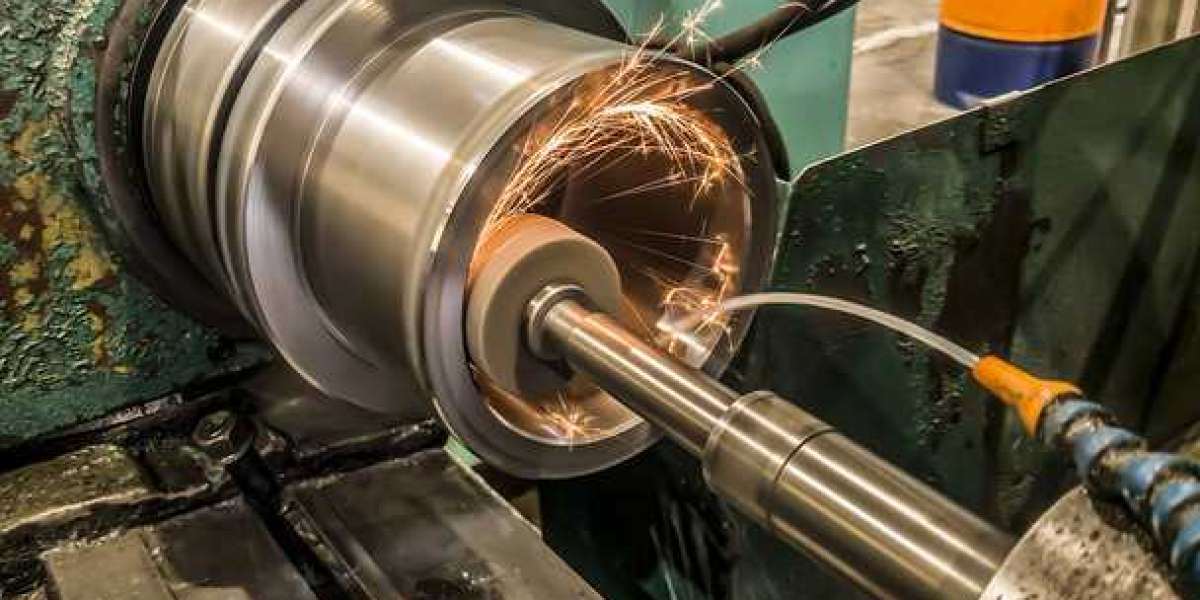Grinding is a fundamental process in manufacturing that involves the use of an abrasive material to remove unwanted substances, smooth out surfaces, or sharpen cutting tools. It is a crucial step in the production of various products, including precision parts, machinery, and equipment. In this article, we will explore the definition, types, and processes of grinding in manufacturing, highlighting its importance and applications in different industries.
Definition of Grinding in Manufacturing
What is grinding in manufacturing refers to the process of using an abrasive material to remove material from a workpiece, resulting in a smooth and polished surface. The abrasive material, which can be in the form of a grinding wheel, sandpaper, or abrasive powder, is applied to the workpiece with a certain amount of pressure and speed. This process is used to remove imperfections, smooth out rough surfaces, and sharpen cutting tools, ultimately improving the overall quality and performance of the final product.
Types of Grinding in Manufacturing
There are several types of grinding processes used in manufacturing, each with its unique characteristics and applications. Surface grinding, for instance, involves removing material from a flat surface using a rotating grinding wheel. This type of grinding is commonly used to smooth out metal surfaces, remove rust, and prepare surfaces for painting or coating. Cylindrical grinding, on the other hand, involves removing material from a cylindrical surface using a rotating grinding wheel. This type of grinding is commonly used to manufacture precision parts, such as engine components and hydraulic cylinders.
Processes of Grinding in Manufacturing
The grinding process in manufacturing involves several key steps, including preparation, grinding, and finishing. Preparation involves cleaning and preparing the workpiece for grinding, which includes removing any debris, oil, or other substances that may interfere with the grinding process. Grinding involves applying the abrasive material to the workpiece and removing material, resulting in a smooth and polished surface. Finishing involves inspecting the final product and making any necessary adjustments to ensure that it meets the required specifications.
Applications of Grinding in Manufacturing
Grinding has a wide range of applications in various industries, including aerospace, automotive, construction, and manufacturing. In the aerospace industry, grinding is used to manufacture precision parts, such as engine components and hydraulic cylinders. In the automotive industry, grinding is used to repair and maintain vehicles, including brake rotors, engine components, and gearboxes. In the construction industry, grinding is used to smooth out concrete surfaces, remove old coatings, and prepare surfaces for new coatings.
Benefits of Grinding in Manufacturing
Grinding offers several benefits in manufacturing, including improved surface finish, increased precision, reduced material waste, and improved safety. Grinding can produce a high-quality surface finish, which is essential for many applications, such as aerospace and automotive. Grinding can also produce precision parts with tight tolerances, which is essential for many applications, such as manufacturing and construction. Additionally, grinding can reduce material waste by removing only the necessary amount of material. Finally, grinding can improve safety by removing sharp edges and burrs, which can cause injuries.

Common Grinding Tools and Equipment
Grinding requires specialized tools and equipment, including grinding wheels, grinding machines, sandpaper, and abrasive powders. Grinding wheels are made from abrasive materials, such as silicon carbide or aluminum oxide, and are used to remove material from a workpiece. Grinding machines are used to perform grinding operations and can be manual or automated. Sandpaper is a type of abrasive material used to remove material from a workpiece by hand. Abrasive powders are used to remove material from a workpiece using a grinding wheel or sandpaper.
Conclusion
Grinding is a fundamental process in manufacturing that involves the use of an abrasive material to remove unwanted substances, smooth out surfaces, or sharpen cutting tools. By understanding the definition, types, and processes of grinding in manufacturing, individuals can appreciate the importance of this process in the production of various products. Whether it's used in the manufacturing of precision parts or the maintenance and repair of equipment, grinding is an essential process that continues to play a vital role in many industries.













